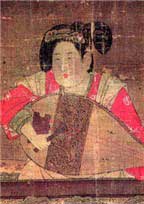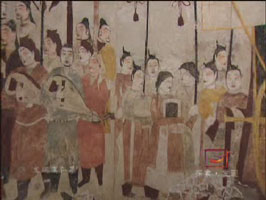Originally posted by kasos
.... By the way, I should indicate thanks to you for introducing me to Liu Fang's pipa videos, earlier in this thread. Before you brought the
subject up, when I had been looking for an instrument to accompany my erhu fiddle, I was leaning heavily toward a zither-type instrument (probably a
guzheng), but I've now reconsidered.... This week a full size pipa became available on E-bay for a very modest price, so I've decided to take the
plunge and get one....
Take care, Mark |



 (from http://liufangmusic.net/English/pipa.html)
(from http://liufangmusic.net/English/pipa.html)






 )
) . It's Peyman Nasehpoor. He is a very good
professional tombak player. He lives and teaches in Iran and has great knowledge about drums. His father is a famous meastro as well as one of the
greatest living voice teachers. He also runs Iran house of music http://www.iranhmusic.com which is not in English yet. You can definitely ask him questions about instruments too as he lives in Iran and has
access to many resources. He has a yahoo group which I read sometimes. I think him and his brothers have posted a lot of good info on their websites.
. It's Peyman Nasehpoor. He is a very good
professional tombak player. He lives and teaches in Iran and has great knowledge about drums. His father is a famous meastro as well as one of the
greatest living voice teachers. He also runs Iran house of music http://www.iranhmusic.com which is not in English yet. You can definitely ask him questions about instruments too as he lives in Iran and has
access to many resources. He has a yahoo group which I read sometimes. I think him and his brothers have posted a lot of good info on their websites.

 )
)

